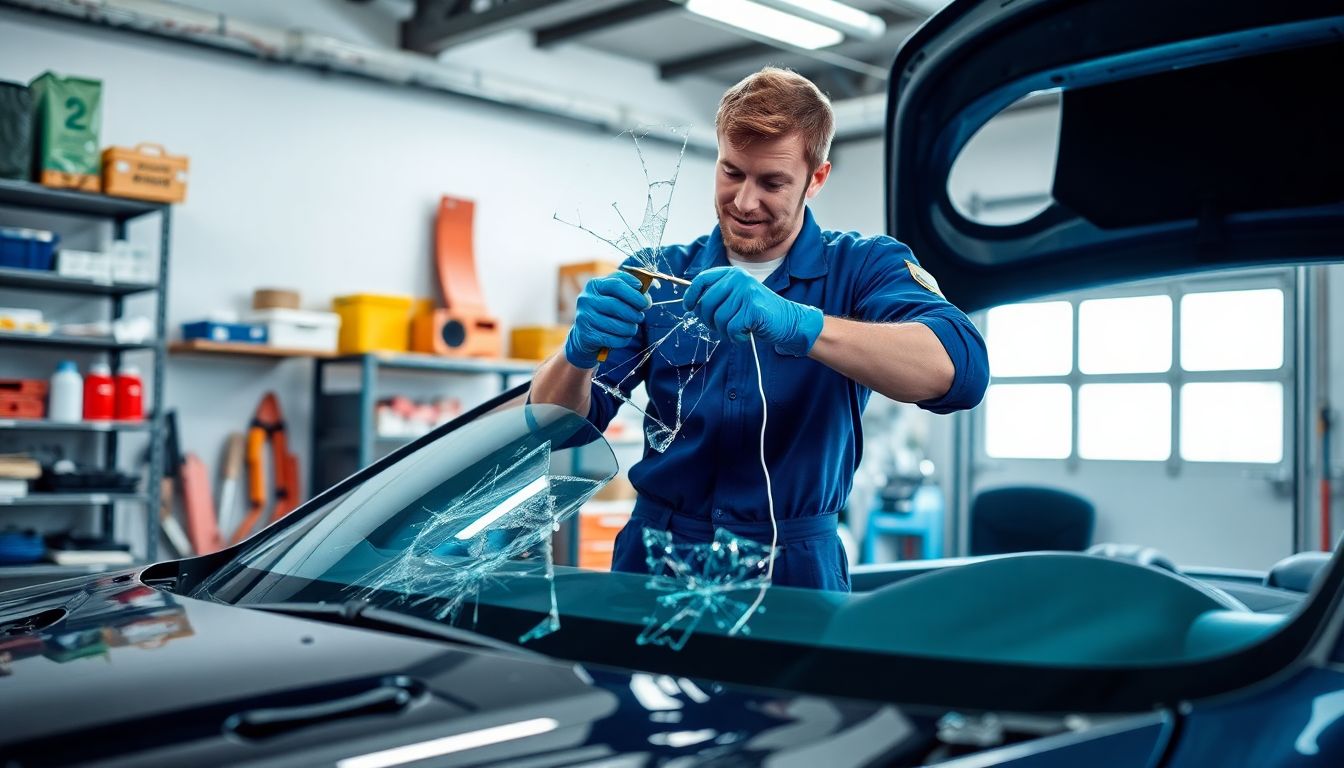
How to Repair Car Glass: A Complete Guide to Restoring Your Vehicle’s Integrity
Introduction
Car glass repair is essential for your safety. It protects you from wind, debris, and weather, while making sure you see the road clearly. Damaged glass can be risky—small chips can turn into big cracks quickly. Nearly 60% of drivers experience at least one chip or crack each year. Acting fast makes a difference. Repairing your glass on time is often easier and cheaper than replacing it. This guide takes you through the steps to fix your car glass, whether you want to do it yourself or hire a professional.
Understanding Car Glass Types and Damage
Types of Car Glass
Your vehicle has different types of glass, each serving a special purpose. The windshield is laminated glass, made of two layers with plastic in between. It keeps you safe during accidents and prevents shattering. Side windows and the rear window are often tempered glass. These break into small pieces to avoid injury. Knowing the type helps decide if you can repair or need a replacement.
Common Types of Damage
The most common damage includes chips, cracks, pits, and scratches. Chips are small, while cracks are longer and more serious. Pits look like tiny dents, often from stones. Scratches are surface marks that don’t affect safety. Small chips are usually repairable, but large cracks might need replacement. Location matters, too; damage near the edges is riskier.
Recognizing Urgent Repair Needs
If your glass is cracked or shattered, don’t delay. Damaged glass can impair your visibility and compromise safety. Cracks that spread quickly or block your view should be repaired immediately. If you notice a big crack or shattered glass, consider professional help right away.
Preparing for Car Glass Repair
Assessing the Damage
Start by inspecting your glass. Measure the size and location of chips or cracks. Small chips under a quarter are often fixable. Larger cracks or multiple damage spots might need a dedicated professional. Use good lighting and check from different angles to see how severe the damage is.
Gathering Necessary Equipment and Materials
For DIY repairs, get a quality repair kit. Look for one with resin, an applicator, and curing strips. Make sure the kit matches your type of damage. You’ll also need gloves and safety glasses to protect yourself. Avoid cheap kits that may cause more harm than good.
Safety Precautions
Always handle broken glass carefully. Wear gloves and eye protection to prevent cuts. Avoid working in extreme weather—hot or rainy days can affect results. If your vehicle is in a busy place or unsafe spot, find a safe area to work.
Step-by-Step Guide to DIY Car Glass Repair
Cleaning and Preparing the Area
Clean the damaged spot thoroughly. Use glass cleaner to remove dirt, oil, or moisture. Dry the surface completely. Any debris can stop the resin from sticking properly. Sanding is not recommended unless specified in your kit, as it can cause more damage.
Applying the Repair Solution
Follow the instructions on your repair kit. Usually, you’ll apply the resin into the chip or crack. Use the applicator to push it deep into the damage. Be patient. Overfilling can cause a cloudy look. Cover the spot with curing strips and let it sit for the recommended time. Proper curing makes the repair strong and clear.
Finishing and Polishing
Once the resin cures, remove the curing strips carefully. Use a razor blade or scraper to eliminate excess resin. Wipe the area with a clean cloth. For the best look, polish the surface gently to restore clarity. Avoid washing the area for at least 24 hours.
Tips for Successful DIY Repairs
Choose a dry, warm day for repairs. Cold or humid weather can affect resin curing. Avoid rushing the process; patience yields better results. If the damage is too large or the crack is near the edges, get a professional. DIY isn’t suitable for all cases.
When to Seek Professional Car Glass Repair or Replacement
Limitations of DIY Repair
If damage covers a large area or spans the entire windshield, DIY won’t work. Structural integrity is critical—if the glass weakens, your safety drops. For severe cracks, replacing the glass is safer and more effective.
Choosing a Reputable Service Provider
Look for certified technicians with good reviews. Ask about warranty options and guarantees. Check if the shop uses original parts and high-quality materials. Verify insurance coverage for repairs or replacements to reduce costs.
What to Expect During Professional Repair
A professional will inspect your vehicle’s glass first. They’ll recommend repair or replacement depending on damage. Repairs usually take an hour or two, with warranties lasting a year or more. Replacements might take a few hours but restore full safety and clarity.
Preventive Measures and Maintenance for Car Glass
Regular Inspection and Cleaning
Check your windshield regularly for chips or cracks. Clean the glass with gentle supplies to prevent scratches. Keep the surface free of dirt and debris for better visibility and safety.
Protective Measures
Use UV protectants on your glass to prevent damage caused by sunlight. Consider applying coatings that add a protective layer. Avoid quick temperature changes—like pouring hot water on a frozen windshield—that can cause cracks.
Best Practices for Parking and Driving
Park in shaded or covered areas if possible. Avoid leaving your car in construction zones or busy streets where debris hits your glass. Drive carefully to reduce the chance of damage from flying objects.
Conclusion
Fixing your car glass doesn’t have to be complicated. Start by understanding your damage and assessing whether a DIY repair is possible. Always clean and prepare the area before applying resin, and follow the steps carefully for the best results. Remember, small chips are fixable, but big cracks should be left to professionals. Regular inspection and proper maintenance keep your vehicle safe and looking good. When in doubt, consult qualified experts—your safety depends on it. Proper care today helps prevent costly repairs tomorrow.
